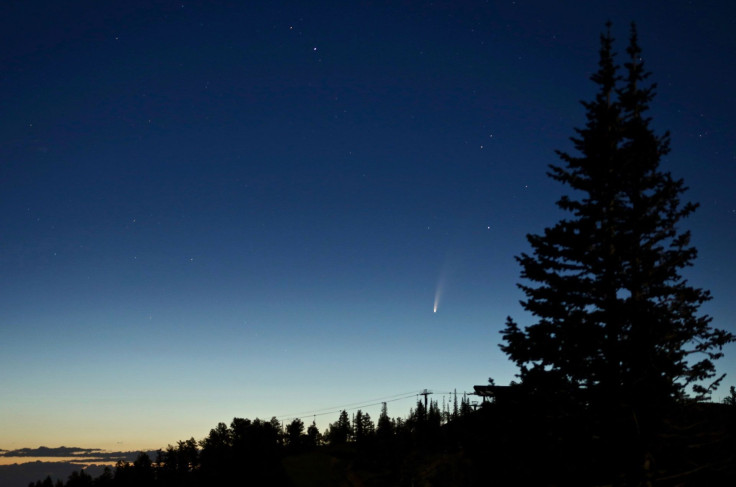NASA Explains How To Spot Visible Comet In The Sky

KEY POINTS
- Comet NEOWISE is now bright enough to be spotted by the human eye
- NASA explained where skygazers can see the passing comet in the sky
- Comet NEOWISE will reach its closest distance to Earth this month
NASA explained how skywatchers can spot a bright comet as it flies closer to Earth. According to the agency, the comet is currently bright enough to be seen by the human eye.
The passing comet is known as C/2020 F3 or NEOWISE. It was first discovered by NASA’s Wide-Field Infrared Survey Explorer (NEOWISE) telescope on March 27.
Comet NEOWISE had just passed the Sun and is now moving away from the massive star’s glare, making it more visible from Earth. The comet’s brightness has now reached a point where it can be viewed without the use of a powerful telescope.
“As of July 7, the comet was easily seen through binoculars, with some observers able to see it with unaided eyes,” NASA explained in a statement. “Comets are notoriously unpredictable, so it's impossible to know if this one will remain so easy to spot, but if it does, it should become easier for more people to observe as July goes on.”
According to NASA, comet NEOWISE is expected to remain visible in the sky throughout the entire month. Its brightness is expected to increase by mid-July. Those looking to watch the comet as it streaks across the sky may do so by watching the northern part of the horizon.
“Through about the middle of the month, the comet is visible around 10 degrees above the northeastern horizon (the width of your outstretched fist) in the hour before dawn,” the agency stated. “From mid-July on, it's best viewed as an evening object, rising increasingly higher above the northwestern horizon.”
NASA clarified that the comet would appear lower in the sky for skywatchers at lower latitudes. Those in northern parts of the world can expect to see comet NEOWISE at a higher position in the sky.
Currently, the comet is traveling across the Solar System. It is expected to reach its closest distance to Earth on July 22. During this date, the comet will be about 64 million miles from the planet. After its near-Earth flyby, the comet will carry on with its journey as it exits the Solar System.
© Copyright IBTimes 2025. All rights reserved.




















